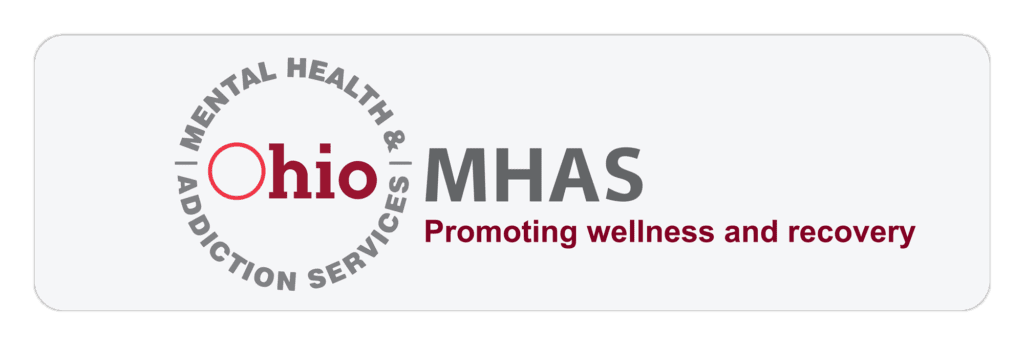Lakewood, Ohio is one of Cleveland’s famous “streetcar suburbs,” making it a beautiful place for residents and visitors alike. It attracts large swathes of people due to its diversity of businesses and restaurants, as well as its waterfront views of Lake Erie. But while Lakewood may sound like an idyllic paradise, it has not been able to escape the drug epidemic and alcohol addiction that has swept Ohio and the rest of the nation in the wake of the COVID-19 pandemic.
One of the key features of Lakewood is its young, diverse population. However, the growing issue of alcohol and prescription drug abuse of led to an ever-decreasing population. Fortunately, there is hope. If you’re looking for a drug rehab facility with inpatient and outpatient services, counseling, detox, and dual diagnosis treatment near Lakewood, Ohio, then Prosperity Haven is just a short drive or phone call away.
It is important to note that the drug and alcohol abuse in Lakewood and the rest of Ohio is a complex issue. You may want to help yourself or someone you love overcome addiction, but it is also a good idea to understand exactly how drug and alcohol abuse have affected (and continue to affect) the city of Lakewood. In today’s guide, we will cover some of the latest drug abuse statistics in Lakewood, as well as programs utilized to combat the crisis. Additionally, we will discuss some of the most pressing issues faced by people dealing with drug or alcohol addiction in Lakewood, Ohio.
The Drug Addiction Crisis in Lakewood
Before we dive into the current drug addiction crisis in Lakewood, it is a good idea to learn about the city itself. Founded in 1889, Lakewood was originally a small town built on land purchased by the U.S. government from Native American tribes residing in the region. Early Lakewood was largely wilderness, though it became more industrialized with the introduction of streetcars in the late 19th century.
Despite its growing popularity, the township of Lakewood had just over 3,000 residents by the turn of the 20th century. However, due to its waterfront property, beautiful views, and developed roads, the small township quickly grew in the 1910s and 1920s. The influx of new residents was also a part of the growing number of immigrants entering the country. In fact, Lakewood boasts one of the most diverse populations of any city in Ohio. The population would peak in 1930 at roughly 70,000 residents before seeing a small but steady decline in the decades that followed.
The declining population became even more prevalent in the 1980s, 1990s, and 2000s. On average, the city of Lakewood was losing 6.6% of its population every 10 years. By the 2019 census, Lakewood had just under 50,000 full-time residents. There are a variety of factors that contributed to the snowballing decline in the local population, with the increasing prevalence of drug abuse among them.
All of Cuyahoga County, including Lakewood, has seen a sharp spike in Fentanyl-related deaths in the last few years. [1] Heroin-related deaths have also increased, though opioid and cocaine-related deaths have neither increased nor decreased over the past 15 years. Though alcohol-related deaths are relatively low in Lakewood because of the low rate of drunk driving, they are still an issue citywide. Alcohol is most dangerous when mixed with other drugs, particularly Fentanyl. In any case, fentanyl, alcohol, and heroin are the three most common contributors to drug-related emergency room visits in the Lakewood area.
Lakewood Drug and Alcohol Abuse Vs. the Rest of Ohio
Even though the population has been in decline for decades, the city of Lakewood, Ohio saw a rise in drug-related deaths between 2010 and 2018. In fact, all of Cuyahoga County recorded 13,341 overdose deaths in 2010, but that number increased by 14,148 just 8 years later. That’s an average annual increase of 100 deaths, or less than 1% of the total overdose deaths in the county. This may not sound like a large increase, but when taking the rapid decline in full-time residents over the past decade, it paints a picture of a smaller population experiencing ever-increasing drug and alcohol-related deaths. [2]
Naturally, it is important to remember that Lakewood only makes up a small part of Cuyahoga County. Nonetheless, the city has experienced a rising number of overdoses that reflects numbers in other nearby cities, like Chagrin Falls. The prevalence of drug and alcohol abuse in Lakewood has only increased since the onset of the COVID-19 pandemic. The city was hard-hit by the pandemic, with high unemployment, overwhelmed hospitals, and a slight increase in crime. Tragically, it has been very difficult for local physicians and medical facilities to treat the large number of COVID-19 patients and drug and alcohol overdose patients simultaneously.
However, Lakewood is still better off than many of the larger districts and cities in the state of Ohio. For example, the average number of overdoses in Lakewood was about 565 prior to the COVID-19 pandemic. Roughly 11% of all these overdoses resulted in deaths. This is extremely low when compared to some other cities like Cincinnati, which maintained an average death rate of about 30% during the same time period.
On the other hand, there are many small townships in Ohio that have far lower drug-related death rates, thanks in large part to low crime rates, government intervention programs, and easy access to medical facilities. For example, cities like Wakaponeta and Ashland have recorded overdose death rates as low as 2% and 7%, respectively. Other factors have also contributed to the large variations in death rates from one town, county, or city to another. Factors like poverty and age demographics also impact the number of overdoses and the percentage of drug-related deaths.
In short, Lakewood has seen higher overdose and death rates than many other locations in Ohio, with an inverse relationship between the population of Lakewood and the number of drug and alcohol-related deaths. Additionally, it is not the worst town in Ohio for drug and alcohol addiction, but it has certainly struggled to keep addiction rates low. The truth is that Lakewood is a lot like many other small towns in the United States. It has worked to combat drug and alcohol abuse, but various factors have still made it difficult for many residents to overcome their addictions.
Substance Abuse Treatment & Prevention in Lakewood
There are various drug rehab facilities in the larger Cleveland area, but the Lakewood city government has been remarkably strong in its efforts to fight drug abuse, particularly concerning opioids. The major of Lakewood even designated the opioid epidemic as a public health crisis, qualifying the city for additional federal funds to provide life-saving drugs and addiction treatments. Moreover, in 2017, the city launched Project SOAR, which the city council described as “a collaborative community response to the opiate crisis.” [3]
In addition to Project SOAR, which garners support from businesses, the community, and every level of government, the city of Lakewood is also helped by the efforts of Cuyagoga County. Thus far, the county has worked to discourage opioid prescriptions by local physicians, resulting in a 0.4% reduction in these prescriptions between 2019 and 2020. Additionally, Project DAWN is a government-sponsored program specifically designed to help subsidize and distribute Naloxone kits to patients addicted to opioids. [4]
Lakewood, Ohio Addiction Statistics
Thus far, we have covered some of the broader facts concerning the drug problem in Lakewood. However, it is important at the hard statistics as welll. This is the only way to see an accurate picture of how the city is faring compared to years past (as well as other cities throughout Ohio and the rest of the country). So, here are a few of the latest and most relevant findings in Lakewood, Ohio as of 2020:
- Annual Overdoses: 565
- Cause of Overdose
- Unspecified Substances: 60%
- Illicit Substances: 27%
- Prescription Drugs: 13%
- Annual Drug-Related Deaths: 62
Addiction Recovery Rehab in Lakewood, Ohio
As you can see, the idyllic views and pleasant streets of Lakewood have not kept the city safe from the growing opioid crisis, street drugs, or alcohol abuse. Consequently, there has been an increased need for drug and alcohol rehabilitation in the city and surrounding areas. Though the government is doing its best to fight drug abuse through Project SOAR and other collaborations, individuals and families also have to reach out for help when it is needed.
Fortunately, Lakewood residents do have access to high-quality drug and alcohol rehabilitation. If you or someone you love is facing addiction and needs help, Prosperity Haven is just a short drive from Lakewood, making it easy for victims of drug abuse to be admitted for inpatient or outpatient treatments. In addition to detox and counseling, Prosperity Haven offers dual diagnosis treatment, residential inpatient programs, group and family therapy, as well as holistic approaches to address the broader needs of each individual.
Are you or someone you love struggling with drug addiction in Lakewood, Ohio? Are you looking for treatment options nearby that can help address drug addiction using a wide range of treatments? If so, feel free to contact the experts at Prosperity Haven to learn more about your options.
Verify Your Insurance
Complete the Form Below to Find Out if You Have Coverage
Complete the Form Below
to Check if You Have Coverage
"*" indicates required fields









